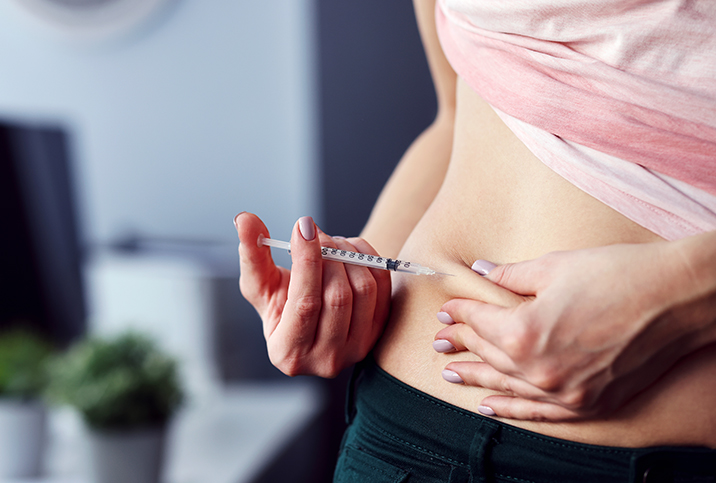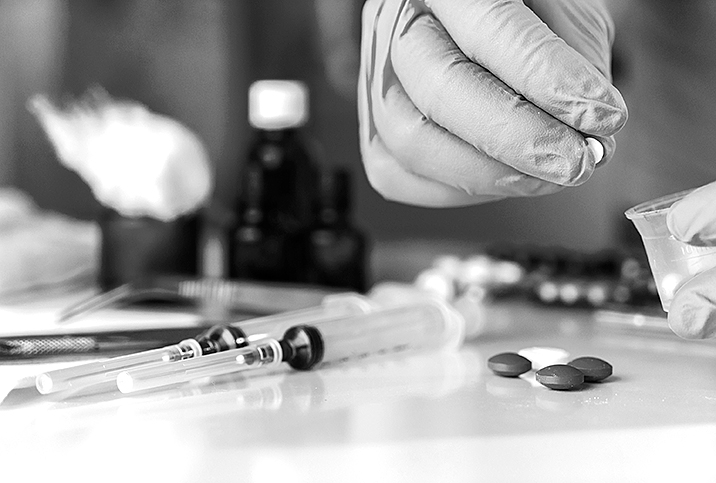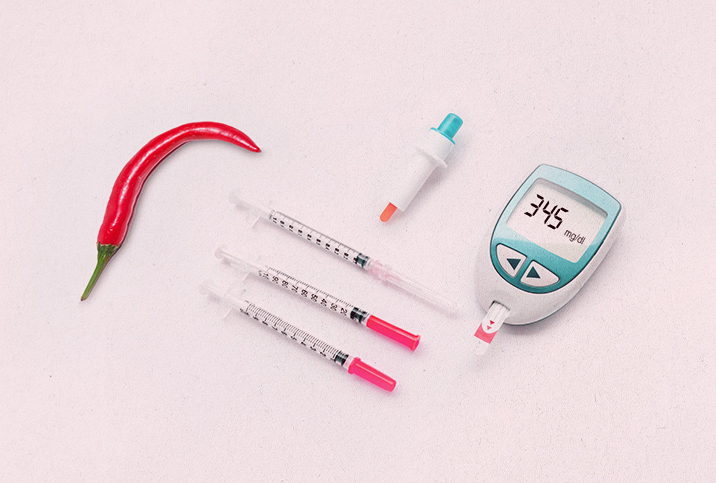You Need to Be Aware of the Causes and Risk Factors of Diabetes

A person's primary energy source is blood glucose, which is obtained from food. The hormone insulin, which is produced by the pancreas, aids the passage of circulatory glucose from food into body cells, where it is used to make energy.
In the blood, all carbohydrates are converted to glucose, and insulin aids the transport of that glucose to the cells.
Blood glucose levels rise when insulin is not produced or is not used as intended, known as hyperglycemia. Over time, elevated blood glucose levels are linked to cellular deterioration and organ and tissue failure.
When blood glucose levels rise too high, a chronic illness called diabetes develops.
Type 2 diabetes is the most common type of diabetes, and it typically affects adults. The disease results when the body develops insulin resistance or produces insufficient amounts of insulin. This type of diabetes has become far more common in both the United States and the rest of the world over the past 30 years.
Type 1 diabetes occurs when the pancreas produces little or no insulin on its own. Patients are required to take insulin from outside sources, such as injections.
Both men and women with diabetes may experience sexual difficulties. If diabetes is not controlled, high blood sugar can damage blood vessels and nerves, including those needed for sexual function.
This damage can lead to erectile dysfunction (ED) in men. Diabetes is also associated with a higher risk for Peyronie's disease (curvature of the penis), low testosterone and ejaculatory dysfunction.
In women, diabetes can lessen the blood flow to the genitals, which is needed for lubrication and increased sensation. This occurrence could lead to decreased libido.
Causes and risk factors for diabetes
The risk factors for type 1 diabetes, which is an organ-specific autoimmune disease, are not as clear as the risk factors for type 2 diabetes.
Known risk factors for type 1 include family history. If you have a parent or sibling with type 1 diabetes, you are more likely to develop the disease. While you can get it at any age, it most often develops in children and teens.
White people are more likely than Black or Hispanic people to develop type 1 diabetes.
However, white people have about half the risk of developing type 2 diabetes compared to virtually all other racial and ethnic groups, according to Marshall J. Bouldin, M.D., the chief medical officer, vice chairman and co-founder of Vigilant Health in Ridgeland, Mississippi.
Genetics and age are risk factors for type 2 diabetes, but the primary cause is being overweight and inactive.
"As you get older, your tissues get more insulin resistant," Bouldin explained. "Being overweight is what has produced the whole phenomenon. The physiology of that is your fat stores get overloaded and your cells are smart enough to say, 'You, Buster, need to stop eating. And we're not taking any more delivery of glucose until you do.'
"The expression of diabetes, in the end, is absolutely a factor of lifestyle," he added. "For the individual person, it's all about what you do and what you eat."
Type 2 diabetes can also develop during pregnancy. This is known as gestational diabetes. In these cases, it's due to an increase in weight and the resulting physiological changes.
"Diabetes induced by pregnancy, which has always been a phenomenon, is much more common today," Bouldin said. "Oftentimes, it will go away as the mother loses the weight after pregnancy."
Types and stages of diabetes
Type 1 and type 2 diabetes are different diseases. Type 1 is a genetic condition that typically shows up early in life, whereas type 2 is usually lifestyle-related and develops over time.
However, the way they are managed is very similar, according to Bouldin.
"The reason they are similar is because diabetes does its primary damage to the body through glucose, which is not something that should be higher than normal," he explained. "Glucose has a toxicity to it. In other words, the higher your glucose is, the more it's toxic. The idea is to keep your glucose within the normal range."
This glucose management strategy is why both types are recognized as diabetes, but they're two totally different diseases, Bouldin explained.
Type 1 diabetes occurs when a person doesn't produce any insulin because of an autoimmune process: Your own immune system doesn't recognize your body and turns it into the enemy. In this case, the target is the islet cell that produces insulin.
"You create antibodies to those islet cells and then you wind up destroying your islet cells, your immune system, and then you don't have any insulin, and you die without insulin," Bouldin said. "You have to take insulin the rest of your life because of that."
Type 2 diabetes, on the other hand, has a very slow onset. You can start to develop it over years in what is known as prediabetes.
"Type 2 is really a bag of things that all wind up in one clinical syndrome," Bouldin explained. "Type 2 diabetes is when your insulin isn't working anymore."
People with type 2 diabetes create insulin, often more than someone without the condition. The problem is their body isn't listening to the insulin as they gain weight. Cells that get packed with more and more fat—energy storage—start resisting insulin.
"Insulin is just the messenger that comes to the cell and knocks on the door and says, 'Hey, here's my buddy glucose, you need to eat this,'" he added. "That's how the cell knows to take the glucose out of the bloodstream. But the cells also know when they've overeaten, unlike the human being. And they start saying, 'No.' And that's what insulin resistance is."
Facts and stats and studies
The number of American adults with diabetes has at least doubled over the past two decades. According to the Centers for Disease Control and Prevention (CDC), 37.3 million people have diabetes (11.3 percent of the U.S. population), and 96 million American adults have prediabetes (38 percent of the adult U.S. population). Within five to 10 years, many of those 96 million people will have diabetes.
Diabetes is the seventh-leading cause of death in the United States. It's the top cause of kidney failure, blindness and amputation of the lower limbs.
According to the American Diabetes Association, the rates of diagnosed diabetes in U.S. adults by race/ethnicity are:
- 14.5 percent of American Indians and Alaskan Natives
- 12.1 percent of African Americans
- 11.8 percent of Hispanics
- 9.5 percent of Asian Americans
- 7.4 percent of non-Hispanic white people
In a Chinese study, researchers randomized more than 500 people with prediabetes and found regular exercise and a healthy diet can reduce the risk of developing type 2 diabetes. People who changed their diet to a healthier one had a 31 percent lower risk of diabetes, while those who started exercising regularly had a 46 percent lower risk over a six-year period.
A study of more than 3,000 middle-age adults with prediabetes found lifestyle counseling (including diet modifications and exercise) could reduce the onset of diabetes by 58 percent. Treatment with the drug metformin reduced the onset by 31 percent.
In a 2019 study, researchers found that in a real-world setting, individuals with lower hemoglobin A1C levels—the average blood sugar level over the past two to three months—after diagnosis of type 2 diabetes had significantly lower vascular complications later. The study illustrated the critical nature of early intervention. The subjects with low A1C levels one year after diagnosis had much lower heart disease risk compared to those with higher A1C levels.
A study of more than 1,400 people with type 1 diabetes found nerve damage to the retina (the light-sensitive layer of nerve tissue at the back of the eyeball) could be significantly reduced by maintaining healthy blood sugar levels over a 6.5-year period. Blood sugar control also reduced the development of cardiovascular disease and kidney disease.
And if you don't have a regular physician, now is the time to find one. Giddy telehealth takes the difficulty out of such a search, providing access to hundreds of healthcare professionals who offer video visits as a regular part of their practices. It is an easy-to-use online portal whose physicians, therapists and others have expertise across the full scope of medical care. Many have same-day appointments.


















